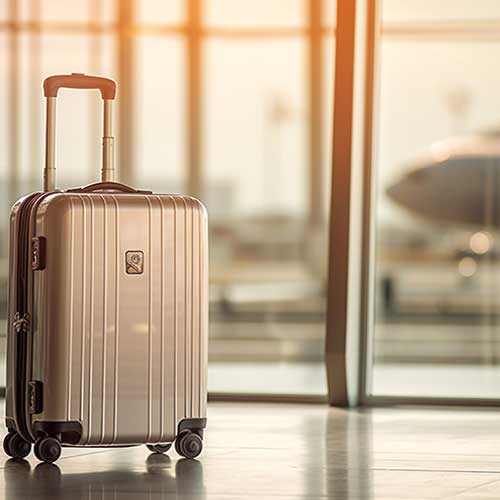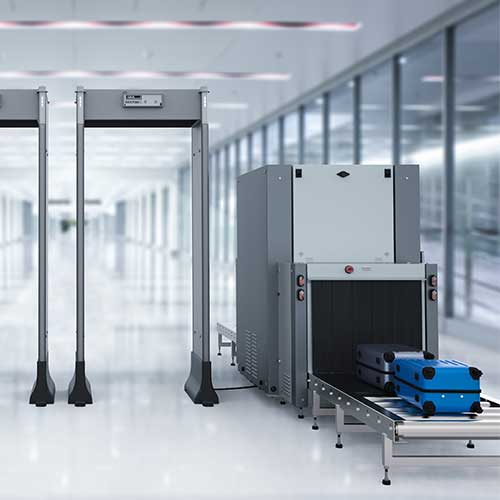Flying After Surgery
Many patients ask when they can travel after surgery again. Similar to driving after orthopaedic surgery, flying and traveling is often seen as an important step towards regaining independence after surgery or an injury. While every airline has slightly different legislations about this, you need to consider a few general things before flying again.
Will you be able to transit through the airport safely?
You need to be confident that you would be able to transit safely through the airport. This includes managing your luggage and navigating to the gates. After orthopaedic surgery, your ability to carry items may be limited. It is best to have a friend or relative accompany you, especially if you are considering traveling after surgery while still managing post-operative pain and needing immobilisation, such as slings, splints or casts.
Are you wearing a splint, sling or have a cast?
Having your arm immobilised will impact your ability to get on and off the airplane. It will also impact your ability to tolerate turbulences. However. if you are already in your later stages of recovery, using a splint or sling may be of benefit while traveling. It can give you more confidence that your limb is partially protected and it can act as a warning sign to other travelers.
Are you taking strong pain killers?
Strong pain killers may have sedative effects. This will affect your judgement, concentration and reaction times. So, if you are taking any strong pain killers (Palexia, Endone, Tramadol) you should consider not flying. In addition, there may be restrictions to prescription medicines for international flights. TravelSECURE has further information about traveling with prescription medicines.
What else to consider when travelling?
- Avoid traveling to remote areas until your surgical wound is healed (2 weeks)
- Avoid swimming in the sea or swimming pools for three weeks
- Organise additional leg room
- Drink plenty of water during your travel
- Travel with comprehensive travel insurance and check that you are covered after your surgery
- The risk of deep vein thrombosis after upper limb surgery is rare; however, consider wearing compression stockings if your flight is longer than 6 hours
General Guidelines Before Flying After Surgery
Arthroscopic or endoscopic surgery
- After keyhole surgery you should allow 2 days before flying
- If you had a nerve block, you should wait until this has worn off
Fracture Surgery
1-2 weeks after fracture (broken bone) surgery
Shoulder Replacement
You should delay flying for 2 weeks after a joint replacement
Open surgery
- For less invasive surgery, e.g. hand and wrist: 1 week
- For complex, more invasive surgery, e.g. replacement surgery: 2 weeks
Plaster cast
- If you are flying 48hrs after a plaster cast has been applied you need to get it split before heading to the airport
- If you had a cast applied within seven days before flying, you need a clearance form (back slabs, slings and splints are exempt)
Will I set off the metal detectors?
Airport metal detectors can pick up internal orthopaedic implants. Detection rates depend on the implant type, the size of the implant, where it is implanted and what metal detector is used.
How often are metal implants detected?
Upper limb implants usually have lower detection rates than lower limb implants (20% vs. 60%). Implants used for fractures, such as rods, nails, screws and plates, are detected less frequently than joint replacements. Individual screws, for example those used for wrist or hand surgery, are unlikely to be detected at all. Further to that, handheld metal detectors have detection rates twice that of walk-through detectors. So, as an example, if you had wrist surgery for a fracture and have a wrist plate, you have a 20% chance of this being detected through a walk-through scanner. The chance is 40% with a handheld scanner.
What happens if I set the metal detector off?
Although there is no harm to your body or your implant when you set off a metal detector, it may increase your transit time through security. If you set off the walk-through detector, you may be required to undergo secondary screening.
Do I need a doctor’s note?
A doctor’s note is generally not required for travel. You may choose to have a note if you do not want to describe the type of surgery you have had. However, a note does not guarantee that you will be able to transit through security faster, as may you may still be required to undergo secondary screening despite a medical note. For joint replacements, you will be provided with an implant card after your surgery which you can present to security staff. Implants used for fracture surgery, e.g. rods, nails, screws and plates, are exempt from needing an implant card.
Airline Regulations
Please click below on your airline logo for Flying After Surgery instructions and for airline-specific Medical Clearance Forms.

Singapore Airlines

Alliance Airlines

Air New Zealand

Cathay Pacific

Fiji Airways

Malaysia Airlines

Qatar Airways

China Southern
Medical Clearance:
call +864008695539

Singapore Airlines

Malaysia Airlines

Alliance Airlines

Air New Zealand

Cathay Pacific

Fiji Airways

Qatar Airways

China Southern
Medical Clearance:
call +864008695539







